The rhythm of creating work…
Dante Marioni has lived and worked in the same studio building in Seattle for 41 years. The studio is located on the first floor, which makes it convenient for getting the motorcycles and mountain bikes he stores there in and out for rides. These pieces of machinery are beautiful, but their imposing metal presence in the middle of the studio makes for quite a contrast to Dante’s own elegant glass forms, produced over the past few decades and gracefully lining the walls. In this same space, there is an area for Dante to pull cane, although sometimes because the cane can get quite long, this happens in the hallway or, when the weather permits, out in the driveway. In the studio, he also cuts the pieces and assembles the patterns that will eventually get applied to the glass and blown into vessels.
Across the hallway from his studio is the hotshop he shares with fellow glass artist Janusz Pozniak, who has worked with Dante for 30 years and who also has his own distinct career. The hotshop was originally put together in 1984 by Mark Ekstrand and Dante’s father, Paul Marioni, and Dante took it over in 1990. When Dante is blowing glass, Janusz is by his side and when Dante is not in the hotshop, Janusz uses it for his own work. When the pandemic hit last year, Dante was just wrapping up some collaborative work with John Kiley (work that was exhibited in 2020 at Schantz Galleries) at the Museum of Glass in Tacoma, which shut down as soon as Dante and John were done working. Word was getting around that all the hotshops were making the same call to close. Dante figured he would have to follow suit, but Janusz (who also resides in the building) suggested they keep the furnace burning. Since they were essentially quarantined together and comfortable wearing masks around one another, they were able to keep at their work.
As pandemic stories go Dante’s is unusual in that, creatively, he was able to fundamentally continue doing what he normally does. His other assistant, a local Seattle guy named Mikey Cozza, chose to hunker down in the uncertain early days of 2020 and temporarily left the glassmaking team incomplete, but before long he returned to work. During this brief period when they could not blow glass, Dante spent a lot of time in the studio thinking about what he wanted to make (doing a form of inner research) and stockpiling patterns. The momentary isolation and pause enabled him to really focus on his vision, advancing the trajectory of his latest series of works, pieces he calls Print and Maze.
When Mikey came back to the studio and Dante’s team was reassembled, the rhythm of creating work resumed in earnest. Most days of the week are devoted to what Dante calls “the fussy stuff”—cane pulling and pattern making. It can take an entire day to chop the pieces of cane and arrange them for a Maze piece, and the rondels that go into the Print vessels are also time-consuming. In both cases, Dante envisions the final vessel as a canvas on which the pattern will lay, and the most exciting challenge for him with these works is predicting how a pattern will turn out when it is finally blown.
Dante explaining his technique to our group on the Schantz Galleries Studio Tour of his studio in 2019.
On Wednesdays, they go into the hotshop and blow the vessels. Each week, the goal is to finish five objects. Dante rigorously self-edits, only keeping finished objects that meet his exacting set of standards. This laid back, native Californian may love adventure and the outdoors, but little gets left to chance in his work. Dante notes that their weekly success rate for acceptable final products lands somewhere between 0 and 5 and it has been a while since they scored a 5. Seconds are often given to Dick Weiss, a stained-glass artist who flattens them and uses them in his large-scale installations.
The works that do pass muster are fresh and flawlessly executed. The patterns on one side of the transparent glass interplay seductively with the patterns on the other side of the glass, which bend gracefully as light refracts through the surface of the material. The resultant and exquisite optical moiré effect is a departure from the opaque vases which characterized Dante’s early work. Those early pieces were all about glassblowing—color was secondary—and Dante talks about how making them made everyone who worked on them better glassmakers. But these latest works are all about pattern, which introduces an entirely different and compelling set of obstacles in the pursuit of excellence.
Ever since a teenaged Dante Marioni met Lino Tagliapietra and started blowing glass, he has been driven in his glass career by a few major motivations: to be really good at what he does; to make really fine work in a way that has not been done before and in a way that only he can; and to contribute to the existing vocabulary of blown glass forms. Dante loves the teamwork aspect of glassblowing, has immense respect for the incredible glass talent concentrated in the Pacific Northwest, and appreciates the amazing work his friends and colleagues are doing in the medium. But in the hotshop, he is uniquely focused and totally in charge of his vision, aiming to make objects that are quintessentially him and not derivative of any of his mentors of friends.
As part of this community of glass, Dante has historically traveled extensively to exhibit, do workshops, teach, and enjoy the local beer. The pandemic brought this to a halt, canceling what would have been a very busy year of trips in 2020 throughout the United States, Europe, and Japan. This weekend, he will take his first airplane trip in 15 months, for an event in conjunction with an exhibition in San Francisco. He plans to go to Pilchuck this June for a short session and the trip to Japan has been rescheduled for fall, making Dante feel like life is slowly getting back to normal. Just like every summer, his furnace will get shut down, partly for its annual maintenance, partly because it is simply too hot to blow glass in the summer, and partly because Seattle offers a brief but glorious stretch of weather which begs to be fully enjoyed. It will be fascinating to see what is next, when Dante once again fires up the furnace and gets back to work.
Available Works by Dante Marioni
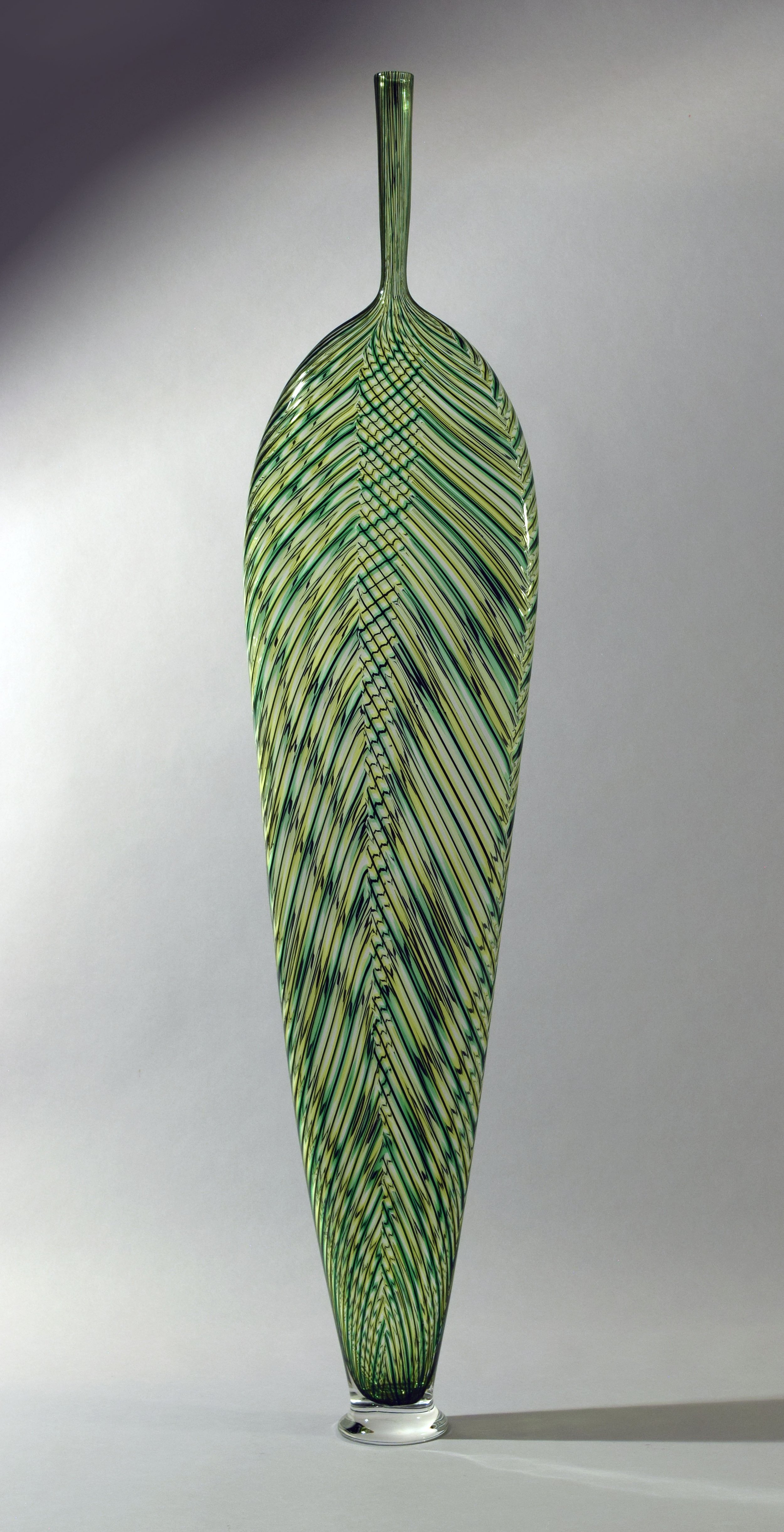

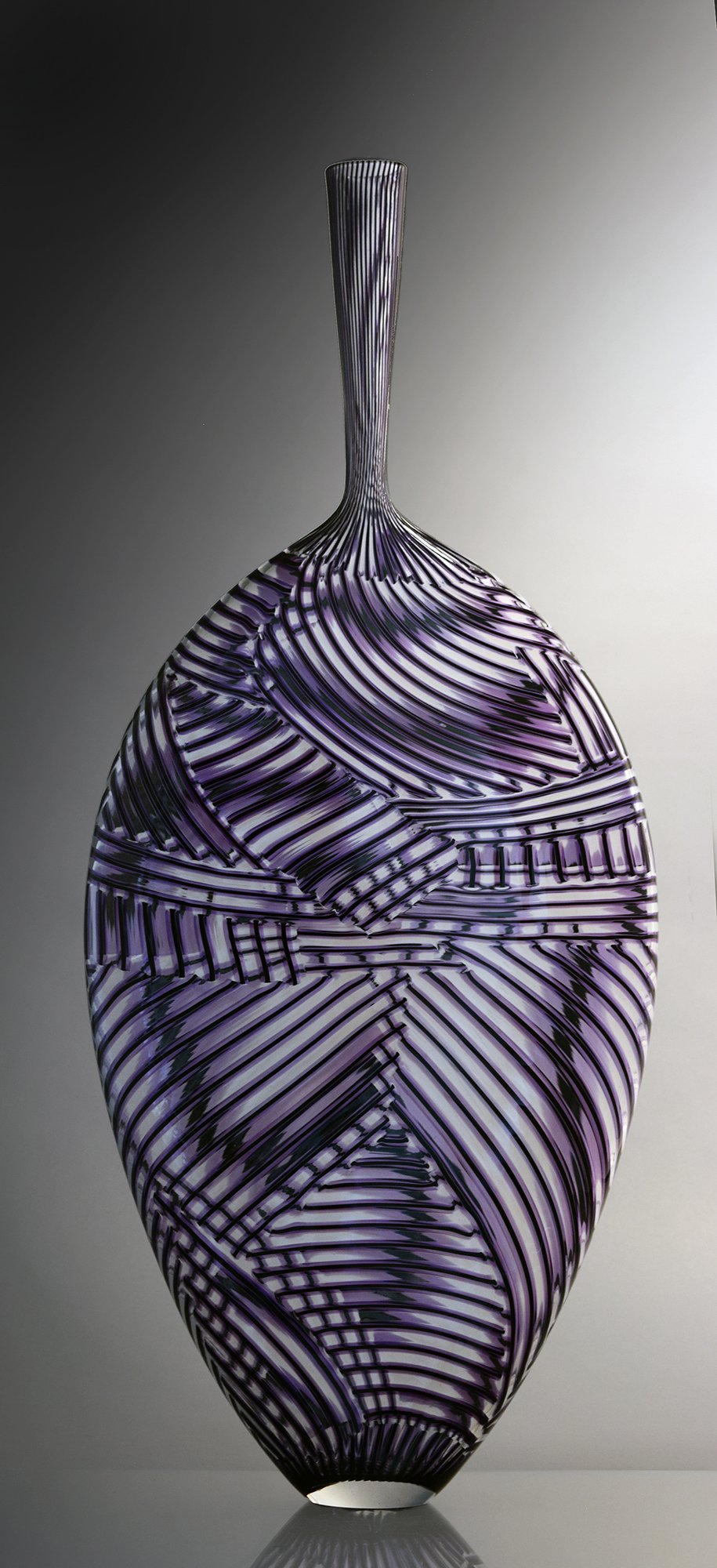
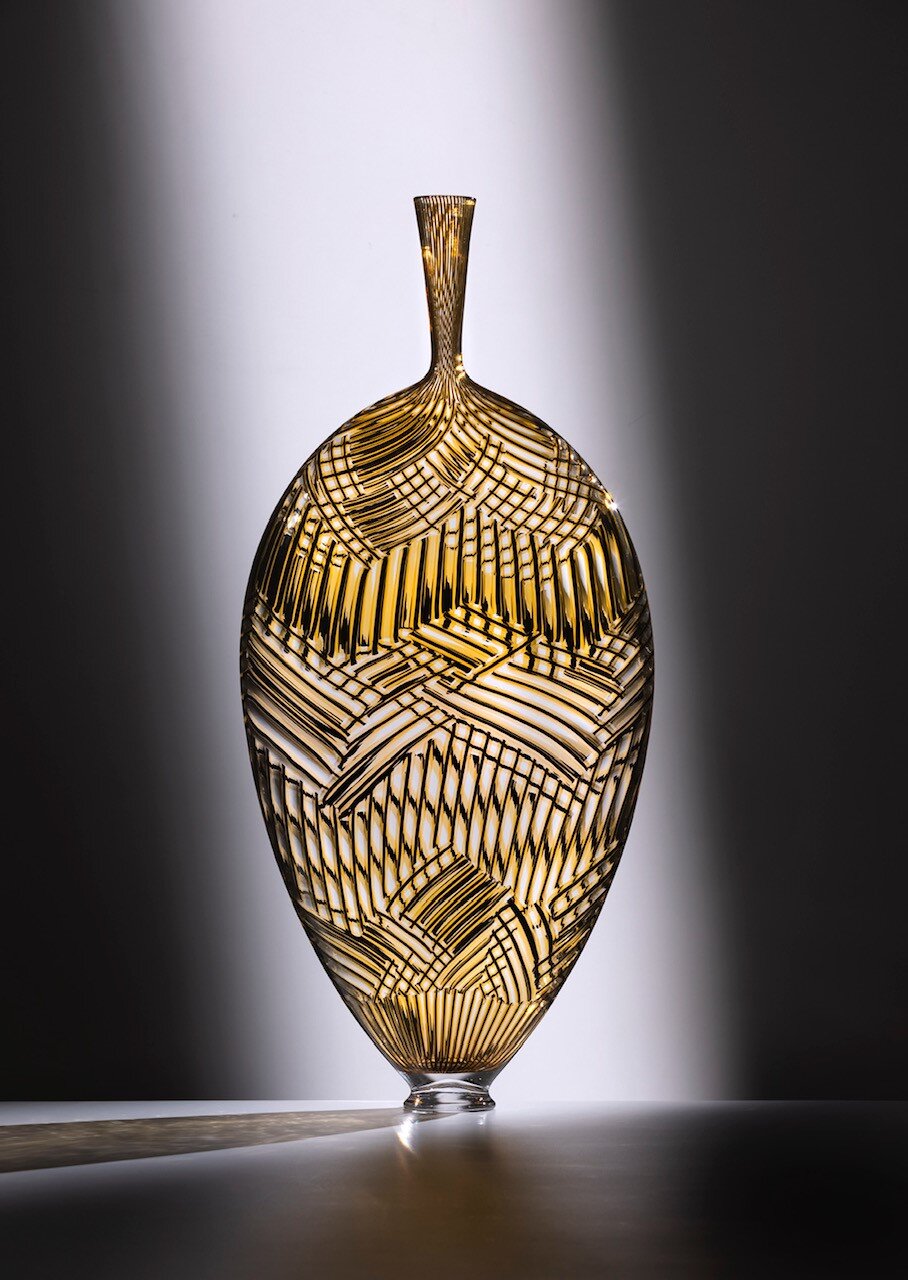
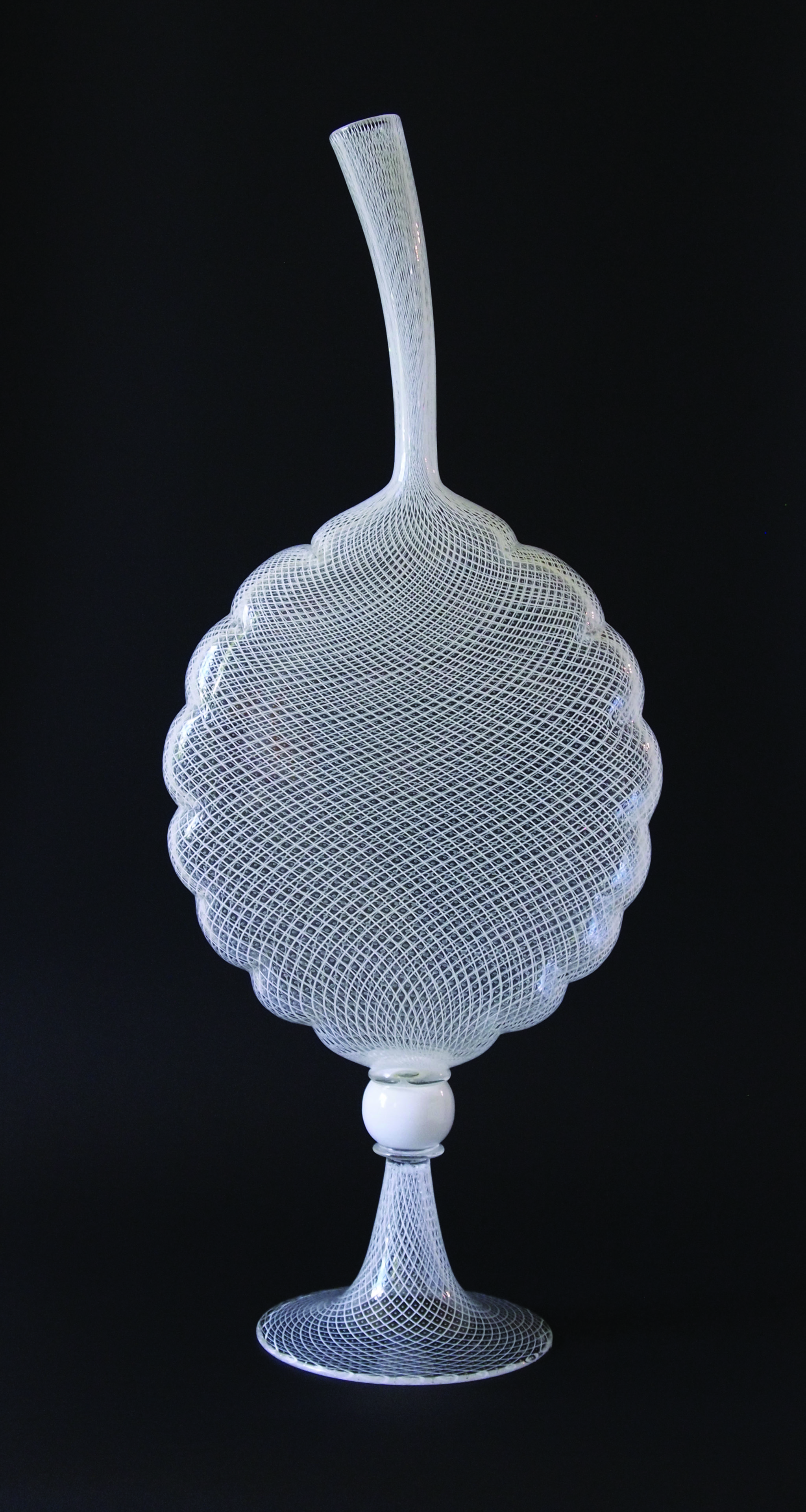
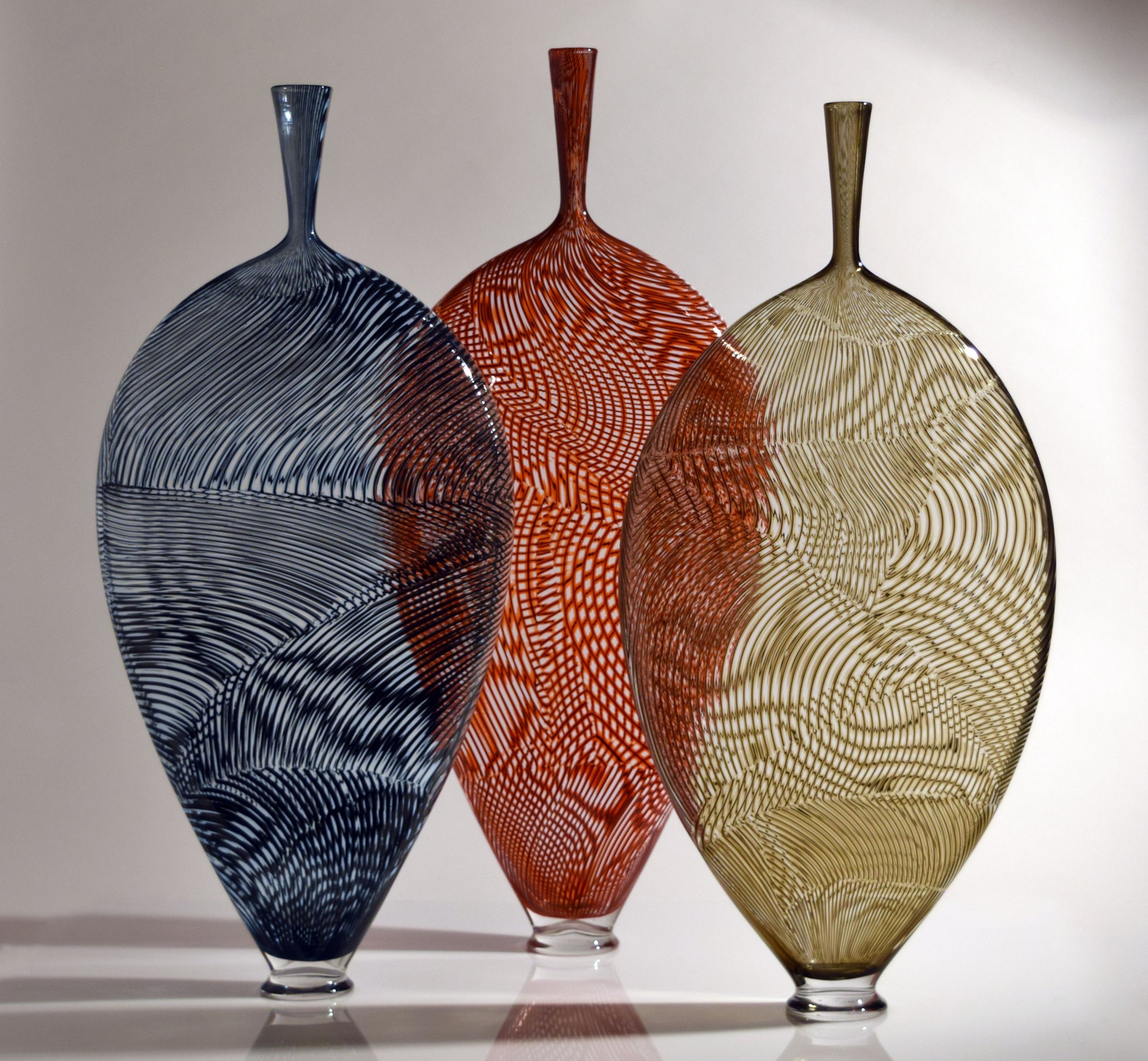
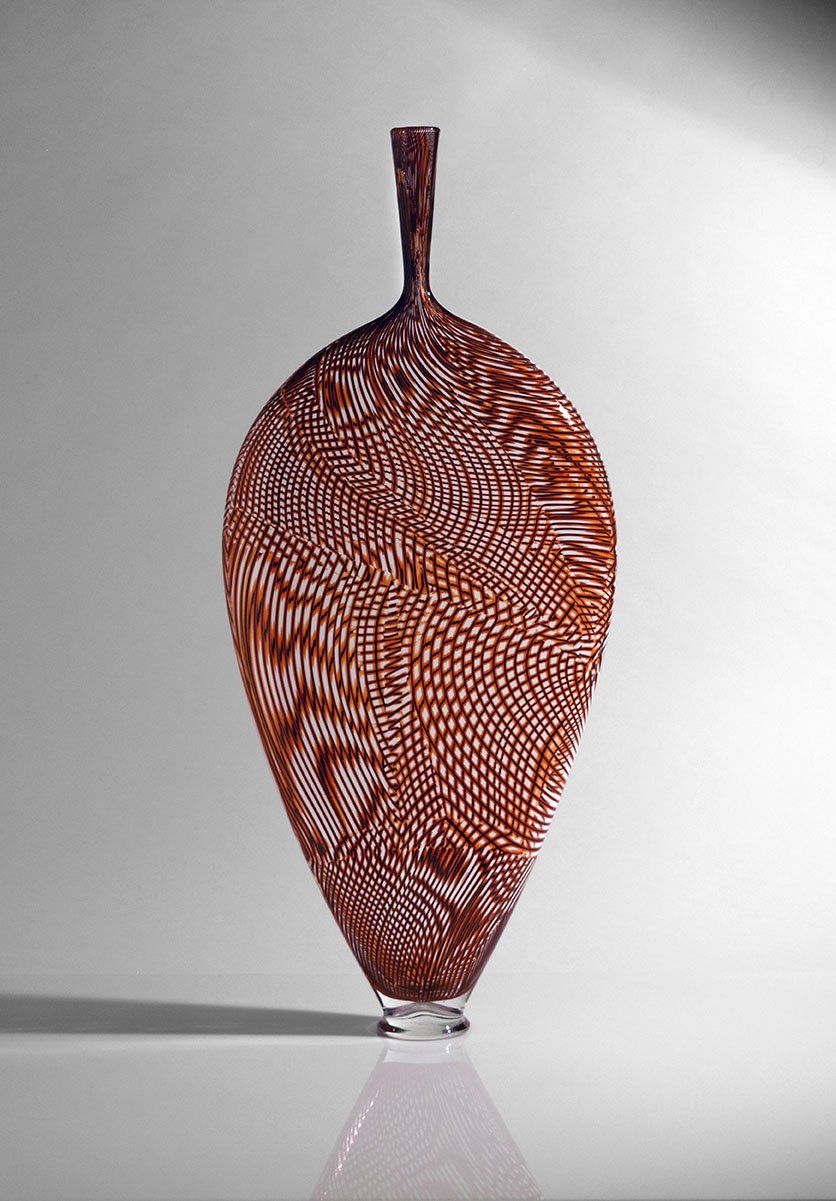

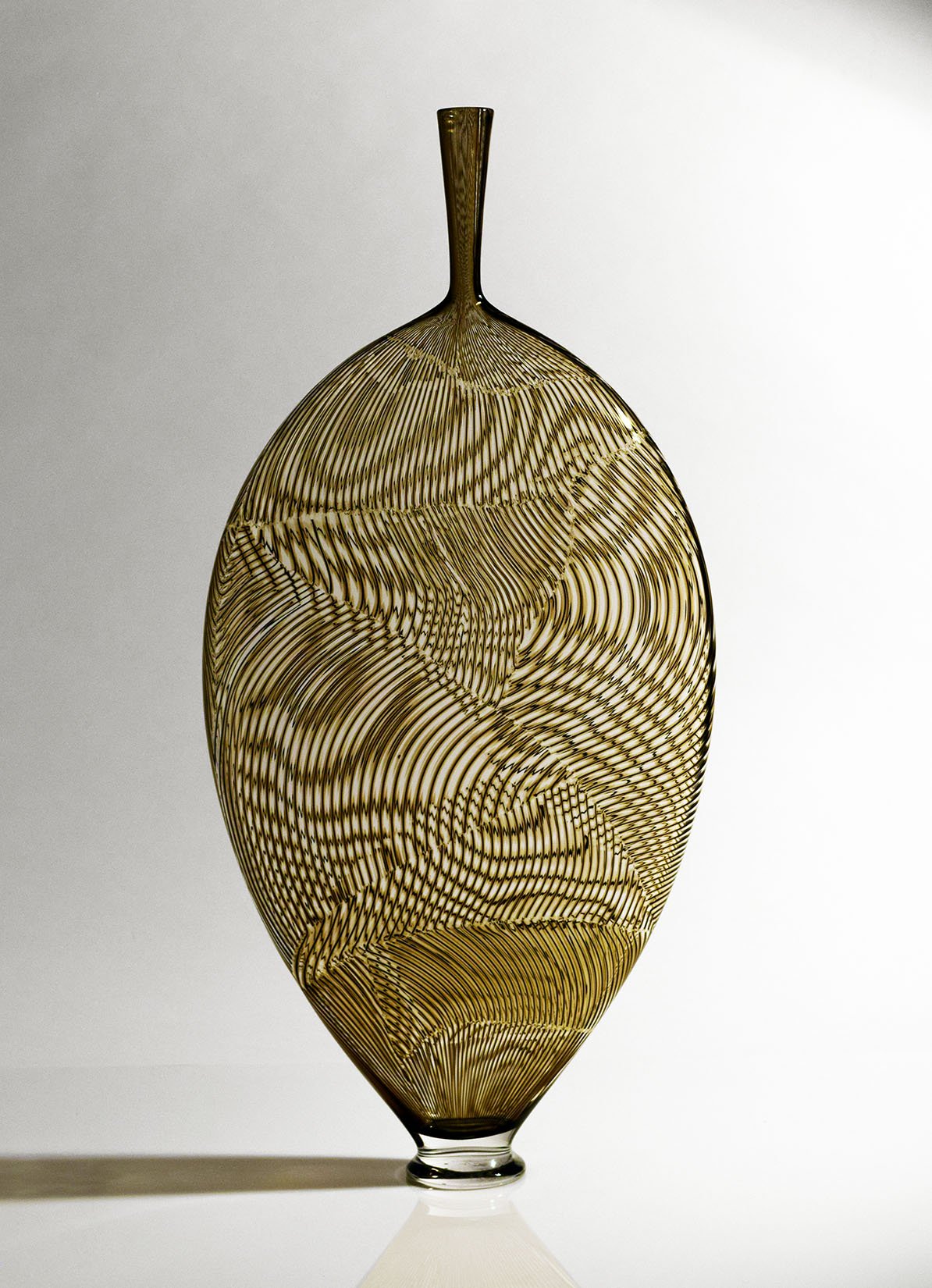
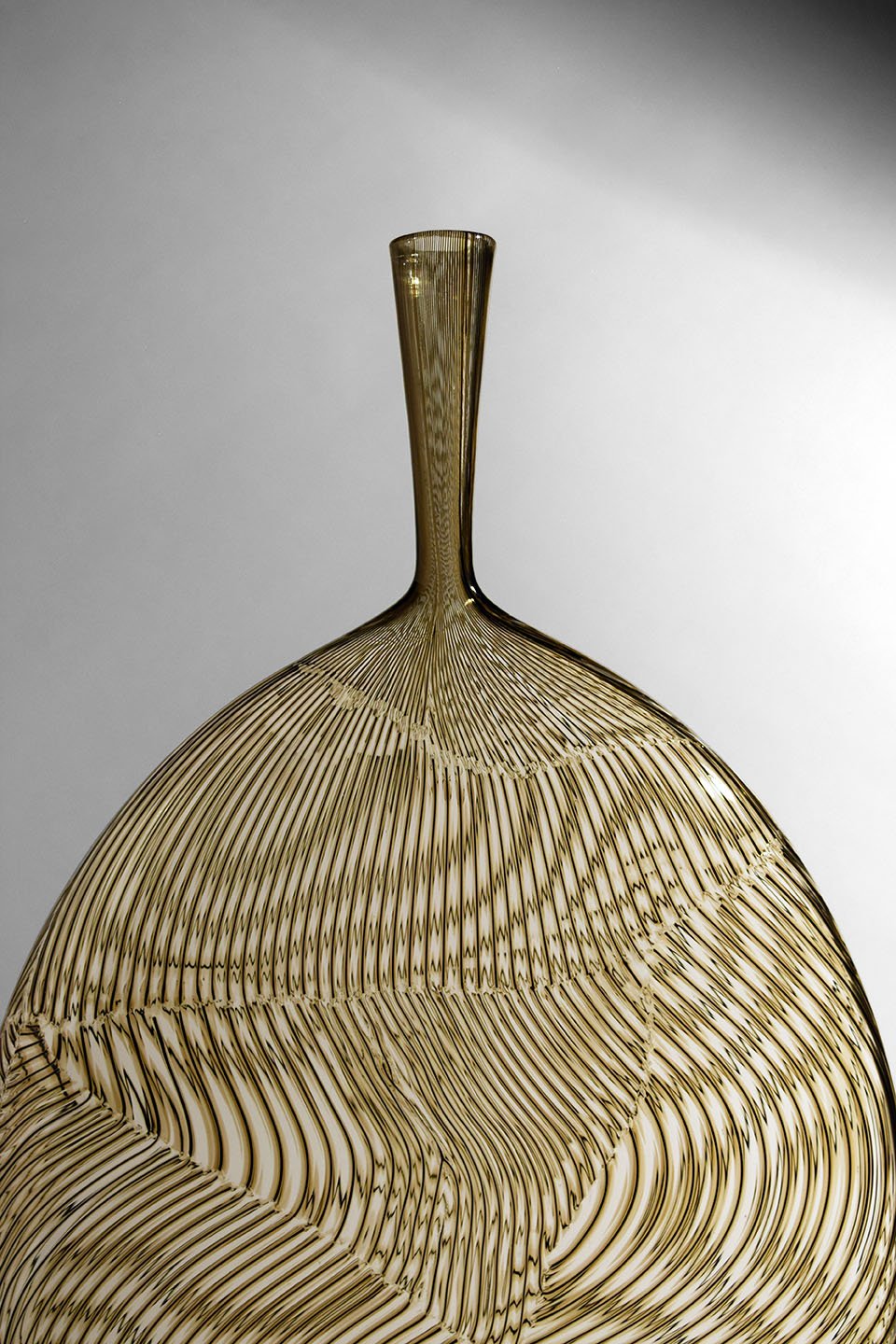
About the Artist
Dante Marioni was exposed to and enamored of glassblowing by the age of 15, when he moved with his family to Seattle. The son of pioneering studio glass artist Paul Marioni, Dante Marioni grew up with a family of artists that includes two well-known uncles, painter Joseph Marioni and conceptual artist Tom Marioni. Dante received an intensive early training at Pilchuck School in Stanwood, Washington, working overtime to practice glassblowing. Here, he met Lino Tagliapietra, whom he credits as the greatest living glass artist, and whom he gratefully calls mentor. Marioni is strongly inspired by Benjamin Moore (some of his more monumentally tall and thin vases are created in Moore’s studio) and Richard Marquis (with whom he developed the mosaic technique).
By the late-1980s, Marioni could claim his own successful career, exhibiting in major galleries and museums such as the Bellevue Art Museum, Washington and the American Craft Museum, New York. In 1995, he was invited to the Clinton White House as part of an exhibition, and his work graced the cover of the accompanying publication, The White House Collection of American Crafts. In 2008, he had a solo exhibition at the Museum of Glass in Tacoma. His works are part of major collections and museums throughout the world, including: the Corning Museum of Glass (NY); the Chrysler Museum (Norfolk, VA); the New Zealand National Museum of Art (Wellington); the Smithsonian Institution (Washington, DC); and the Yokohama Museum of Art (Japan).




